10 Amazing Trees to Remind You Why Nature is Awesome

Get news, updates, & event Info delivered right to your inbox:
For thousands of years, trees around the world have been visited, worshipped, and celebrated. While we often talk about the benefits of trees, there are many other qualities that draw people to them—including their beauty, longevity, medicinal qualities, legends, and ancestral connections.
It is these qualities that have inspired poetry, stories, and art through the ages. Do you have a favorite type of tree? You might after reading this.
Here Are 10 Amazing Trees From Around The World
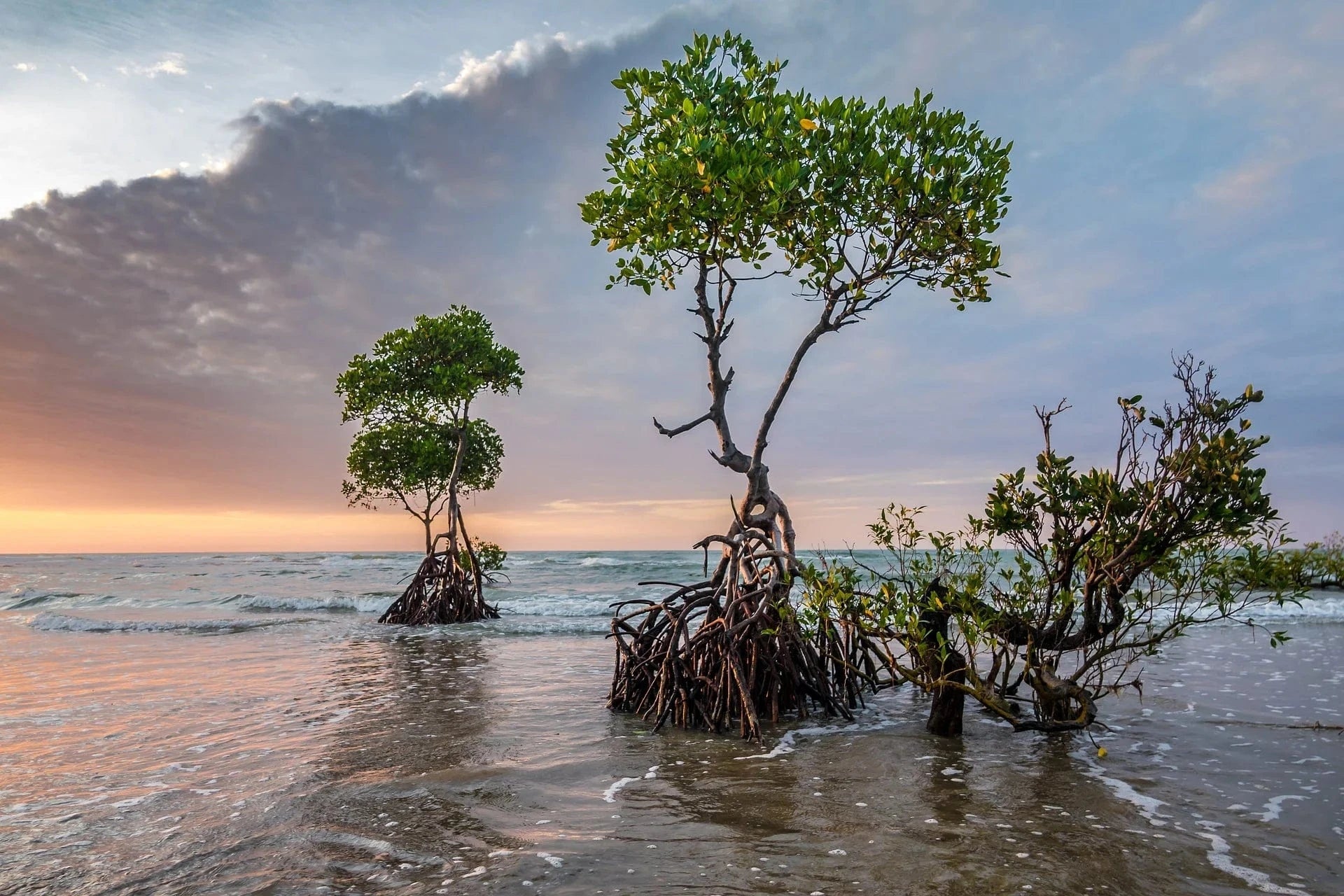
1. Mangrove Trees
Scientific Name(s)
Rhizophoraceae, Acanthaceae, Lythraceae, Combretaceae, and Arecaceae
Native Range
Global tropical and subtropical coastal ecosystems
Fast Facts
- Mangrove forests are a group of trees and shrubs that grow along the world's subtropical and tropical coastlines.
- Their twisted roots and branches jut upward from the sand and water like long, slender stilts and help secure them against the battering of the sea and changing tide — and their thick, waxy leaves filter and excrete the salt from the water.
- Mangrove forests are critical for protecting coastlines, endangered and threatened species, people’s livelihoods, and even helping combat climate change.
- Many mangrove forests around the world are worshipped as sacred groves. In some areas, gods and goddesses are worshipped as protectors of these unique ecosystems.
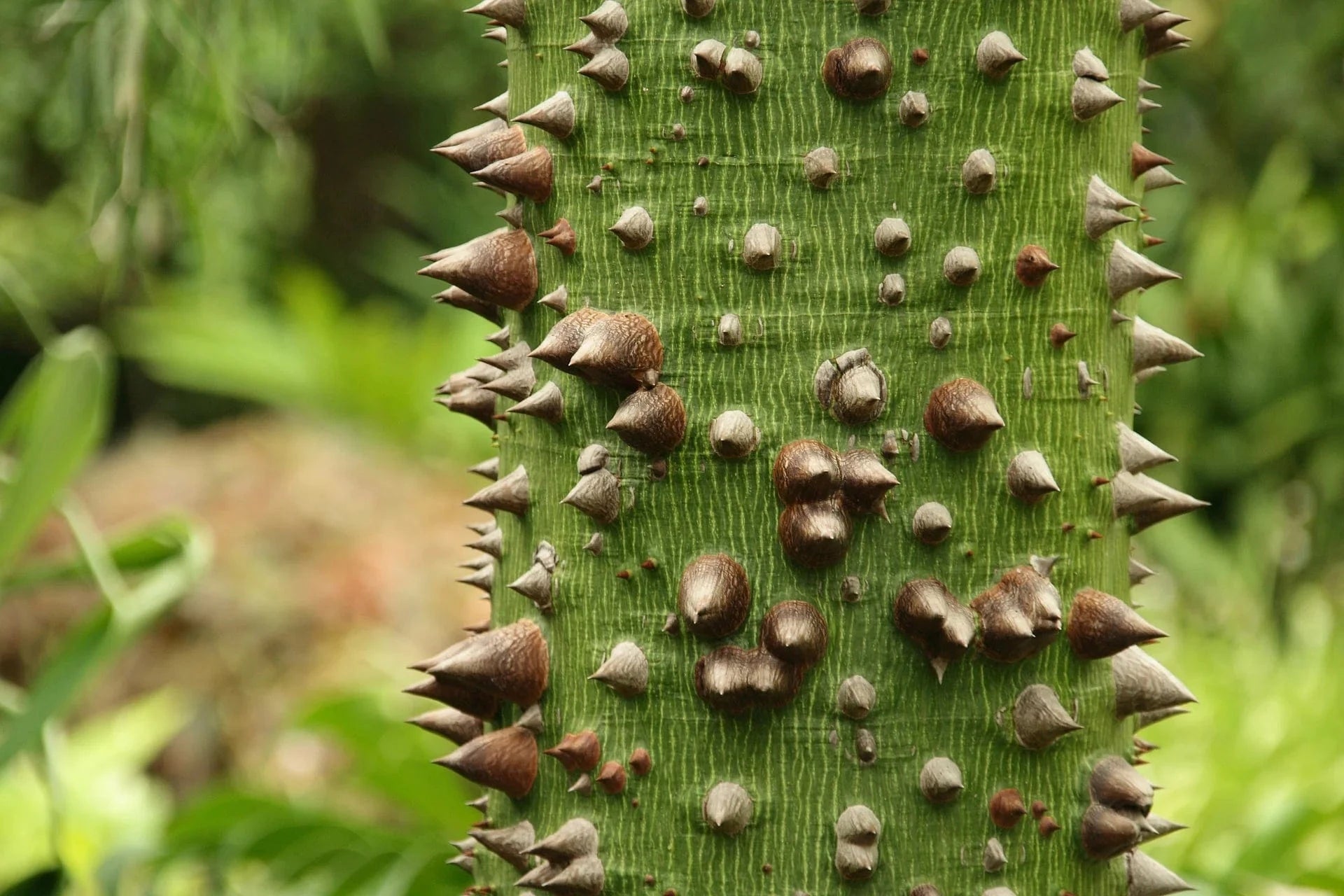
2. Kapok Tree
Scientific Name
Ceiba pentandra
Native Range
New World, Africa
Fast Facts
- Common throughout the tropics, Kapoks are massive trees that dominate the canopy and emergent layer of tropical forests. In the right conditions, they can grow up to 13ft per year, maxing out at around 200ft tall.
- Called the Silk Cotton Tree because they produce pods full of a light, fluffy fiber, Kapoks are native to the New World and Africa, but are cultivated in Asia.
- Their fiber has been used to fill lifejackets, sleeping bags, pillows, mattresses, and more. Other parts of the tree provide light, porous wood for woodworking, seed oil for soap making, and natural medicines.
- The ancient Mayans believed the kapok tree stood at the center of the earth. Today, it remains an important species and is the national tree of both Puerto Rico and Guatemala.
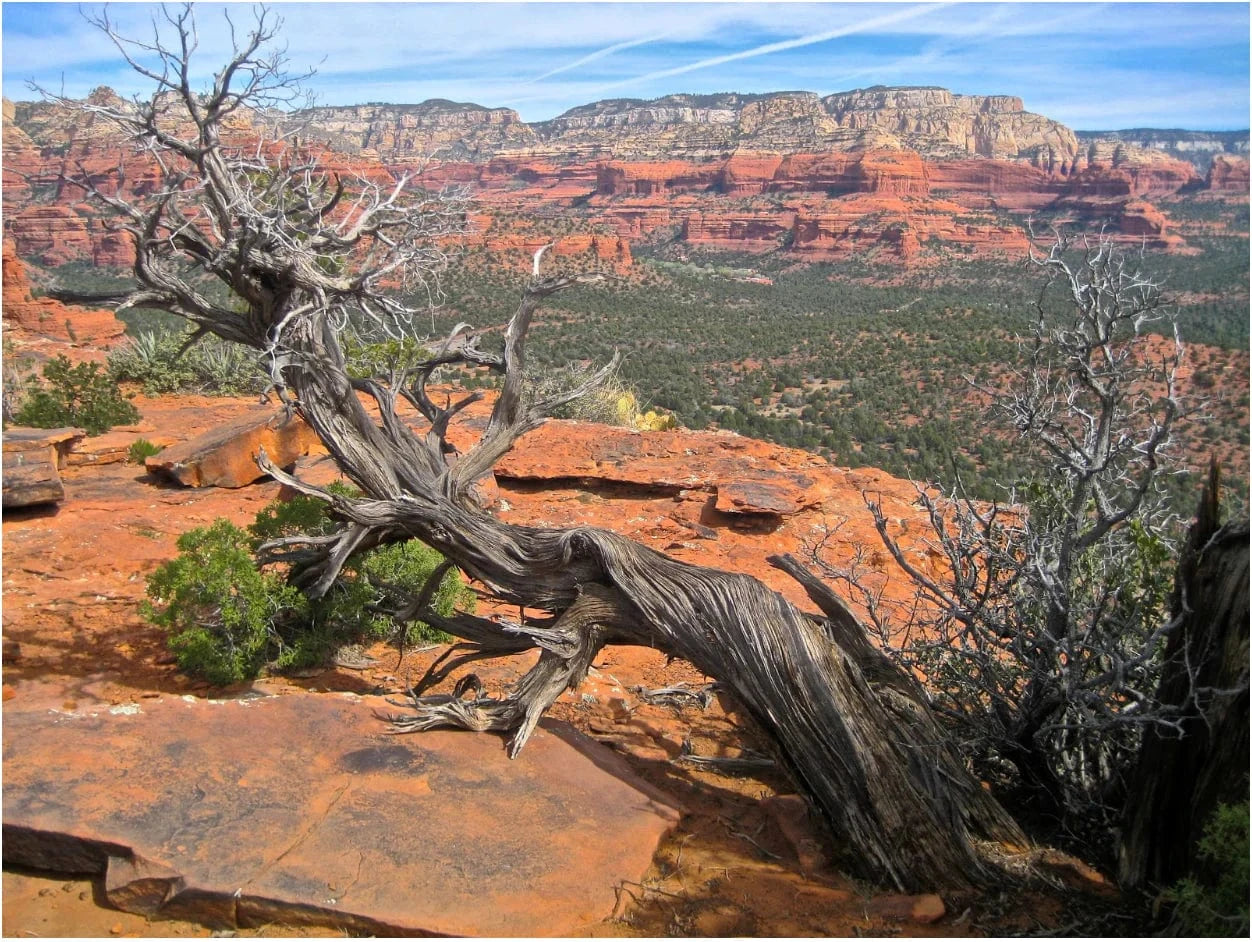
3. Juniper Trees in Sedona, Arizona
Scientific Name
Juniperus osteosperma most commonly occuring
Native Range
Utah, Nevada, Arizona, California, Wyoming, Idaho, Colorado, New Mexico Utah Valley University
Fast Facts
- Sedona, Arizona attractions millions of visitors every year who hope to benefit from "energy vortexes." To believers, a physical sign that you are near a vortex is the twisting of a Juniper tree. Why do they twist like that? Scientists say it's due to the natural features of the environment, which accentuates wind currents—but many locals and tourists believe it is due to swirling mystical energy.
- The Yavapai-Apache Nation call the area home and hold a spring ceremony every year in Boynton Canyon. The canyon holds great spiritual significance, and is believed to be where the Great Spirit Mother gave birth to the human race.
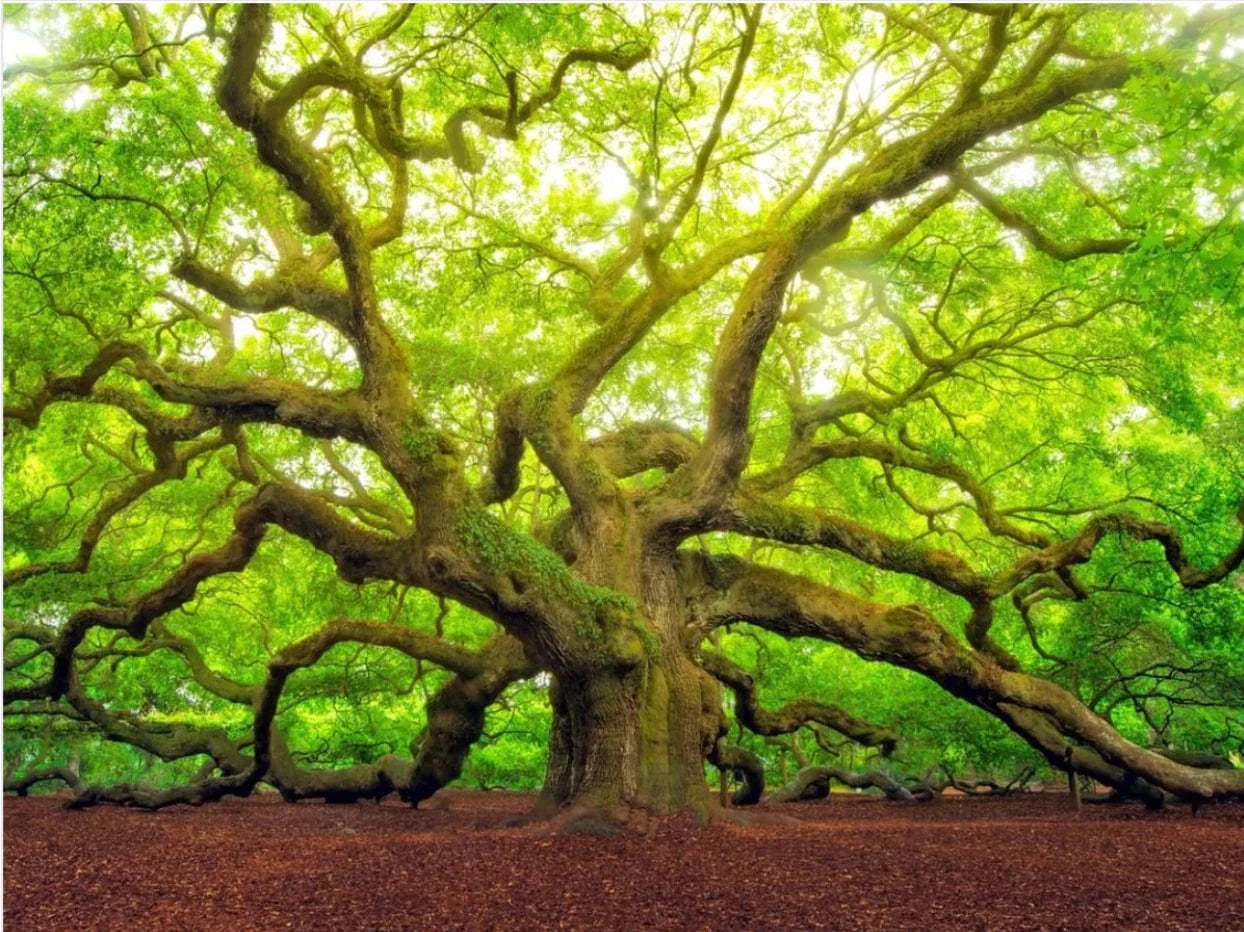
4. Angel Oak Tree
Scientific Name
Southern Live Oak, Quercus virginiana
Location
St Johns Island, Charleston, South Carolina
Fast Facts
- The Angel Oak Tree is located on St. John’s Island, South Carolina, and is one of the state’s most visited landmarks.
- It's said that at over 500 years old, the Southern Live Oak could be one of the oldest living things east of the Mississippi.
- Because of its age, the tree is above average in height, reaching over 65 feet high. Its longest branch extends 187 feet, and some branches even drill back into the ground and begin to grow back upward.
- Known by many locals as “The Tree”, members of the community and visitors hold a deep respect for the oak. So much so that in 1991 there was significant public support for the City of Charleston to purchase land surrounding the tree to ensure that no future developments would jeopardize the tree.
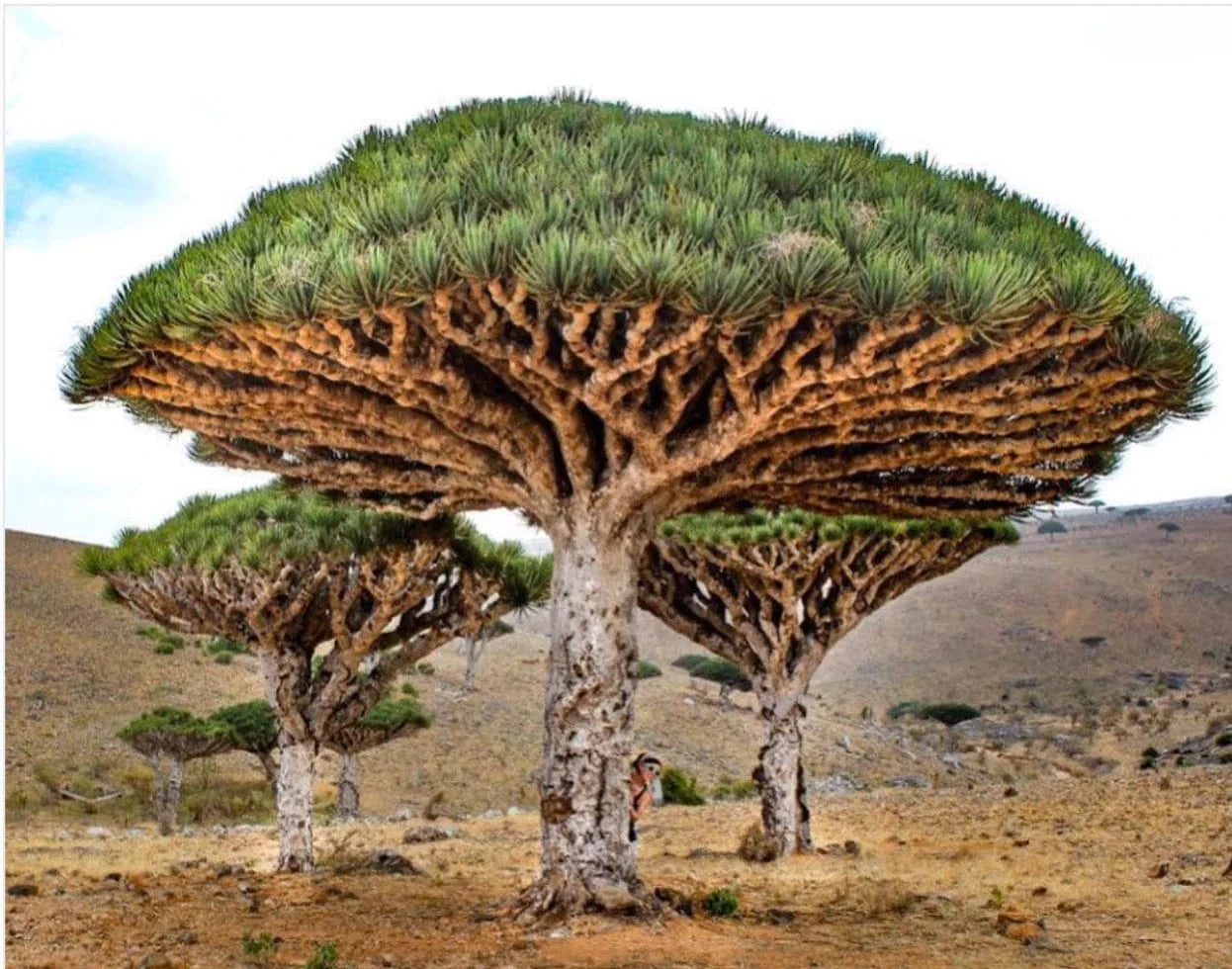
5. Socotra Dragon Tree
Scientific Name
Dracaena cinnabari
Native Range
Endemic to Socotra Island, Yemen
Fast Facts
- The Socotra Dragon Tree, also known as the Dragon Blood Tree, can only be found on the island of Socotra, Yemen.
- With a unique, umbrella shape and exposed branches that reach for the sky, the tree is able to collect and absorb mist that passes over the island. In a process called horizontal precipitation capture, the tree passes the moisture it collects from the air, into the soil.
- In addition to playing a unique and critical hydrological role on an island that's part of the “Galápagos of the Indian Ocean,” the tree "bleeds" a deep crimson resin when cut.
- The resin has been harvested for hundreds of years, and is ground into a fine powder for paint, pottery glaze, makeup and nail polish, and as a medicinal ointment and elixir ingredient.
- Arabic folklore says the first dragons blood tree grow in a spot where two brothers, Darsa and Samha, fought to the death.
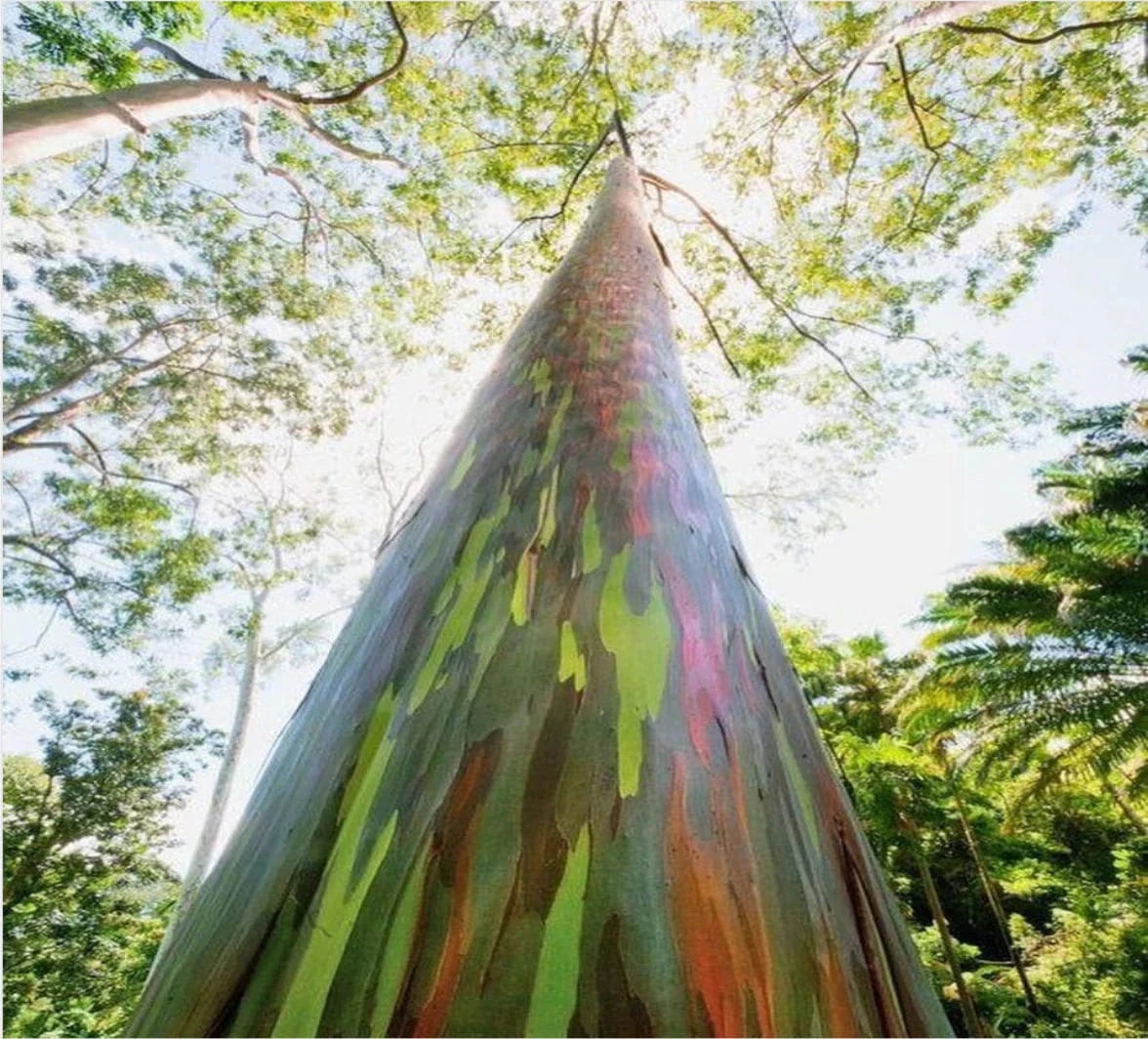
6. Rainbow Eucalyptus Tree
Scientific Name
Eucalyptus deglupta
Native Range
Papua New Guinea, Indonesia and the Philippines
Fast Facts
- The Rainbow Eucalyptus tree is often referred to as a “living work of art” because of the range of colors it can display. During the summer, the tree's orange-tinted trunk peels to reveal a unique, multi-colored bark underneath — which can include streaks of pale green, red, orange, gray and purple-brown.
- Preferring moist humid tropical forests that have high rainfall, the tree is native to New Guinea, Indonesia and the Philippine Islands. It is also planted in Hawaii and other parts of the U.S. as a street and shade tree.
- The only eucalyptus tree indigenous to the northern hemisphere, it can grow up to 250ft tall in its native habitat.
- One scientist hypothesizes that it's due to the presence of various types of tannins, combined with a decrease in underlying chlorophyll as the tree sheds bark in strips. Depending on the types of tannins that are present, sections of bark take on specific hues, earning the tree its name.
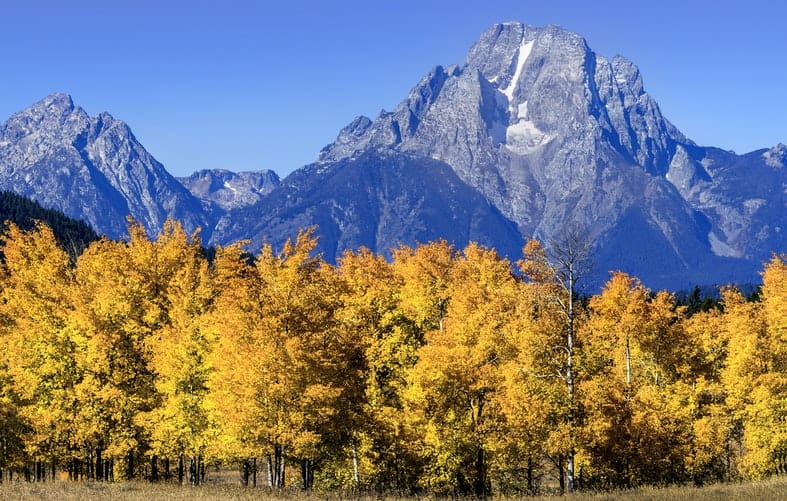
7. Aspen Tree
Scientific Name
Populus tremuloides
Native Range
Native to (and most widely distributed tree in) North America. From Newfoundland west to Alaska and south to Virginia, Missouri, Nebraska, and Northern Mexico
Fast Facts
- The most widespread and prolific tree in North America, Quaking aspen gets its name from its leaves, which tremble with the slightest breeze.
- Every tree in an aspen stand is usually connected to a single root system. The roots of these trees spread far and wide, and new tree trunks grow right up from them. Every tree growing from the same root system in an aspen stand is genetically the same, which is why stands are often referred to as clones or clonal colonies.
- Aspen trunks may live for a hundred years, but the root systems can live underground for hundreds or thousands of years. The US Forest Service found one clone in Utah that they believed to be 80,000 years old.
- Because of how they grow, aspen trees are very resilient and can withstand many disturbances that might wipe out other tree species.

8. Sagano Bamboo Forest
Species
most commonly occurring species is Moso bamboo, Phyllostachys edulis
Location
Kyoto, Japan
Fast Facts
- The Sagano Bamboo Forest is located on the outskirts of Kyoto, Japan, near the Tenryū-ji Temple, a UNESCO World Heritage Site and one of Kyoto's five major temples.
- In Japan, Buddhist temples and shrines can often be found near bamboo groves, because bamboo is thought to symbolize strength and ward off evil.
- One of the biggest draws of this bamboo forest is its natural soundscape. When the wind passes through the tall slender trunks, it creates tranquil noises of leaves rustling and trunks knocking together.
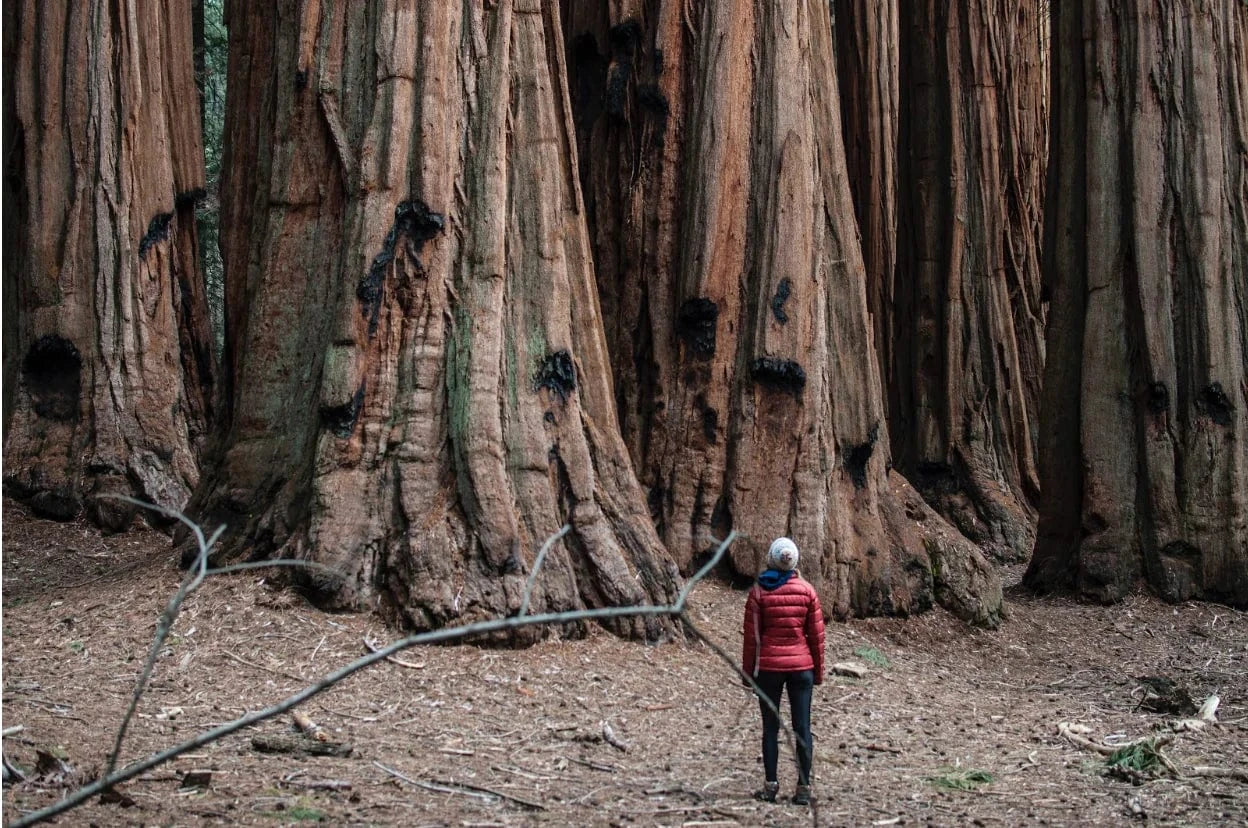
9. Giant Sequoia Trees
Scientific Name
Sequoiadendron giganteum
Native Range
Currently only naturally occur in scattered sites along the western slope of the Sierra Nevada
Fast Facts
- In the western slopes of California’s Sierra Nevada mountain range, at elevations between 3,000-8,500ft, you'll find some of the planet’s largest trees: Sequoiadendron giganteum — or, the giant sequoias.
- These majestic giants represent the world’s largest non-clonal organisms by volume and can live for up to 3,400 years.
- Their age and unique abilities to withstand fire help scientists understand fire history: fire scars on sequoia tree rings dating back 2,000 years show that widespread fires occured naturally every 6-35 years.
- The tree’s extremely fibrous bark, which can be up to 18 inches thick, insulates the trees against the heat of fires — and resists burning. This protects the trees from sustaining significant damage during typical fire events.
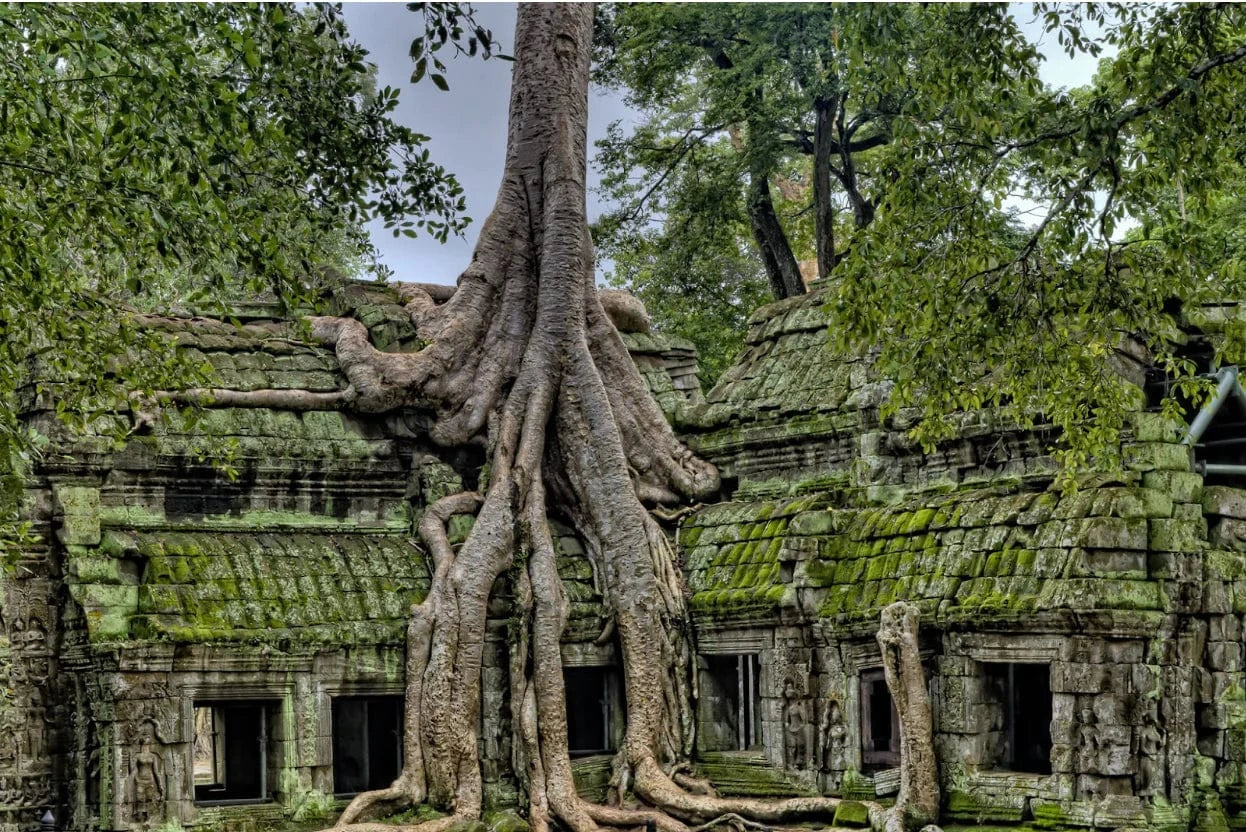
10. Strangler Fig at Ta Prohm
Scientific Name
Ficus Orea
Location
Ta Prohm Temple, Cambodia
Fast Facts
- Ta Prohm is a Buddhist monastery and center of learning that was built in 1186. Over a 500 year period of abandonment by humans, strangler figs and silk cotton trees grew into the temple’s structures, making it a starkly beautiful but truly eerie place.
- While many factors contributed to its demise, interestingly, a team lead by ecologist Mary Beth Day, found evidence pointing to an ancient drought, then flooding, that may have lead to the demise of the city and temple. In other words: changing climate conditions contributed to the abandonment of the structure, and nature wasted no time in taking over.
From umbel-shaped dragon's blood to towering ponderosa pines, we hope you enjoyed this list of amazing trees around the world.
Want to ensure that future generations will be able to enjoy everything that trees and forests have to offer? You can help by planting trees today!
Get news, updates, & event Info delivered right to your inbox:
Related Posts
Real vs. Fake Christmas Trees: Which is Better For the Environment?
20/11/2025 by Meaghan Weeden
8 Reasons to be Grateful for Trees This Thanksgiving
18/11/2025 by Meaghan Weeden
The Ultimate Guide to Sustainable Holiday Gifting
13/11/2025 by Meaghan Weeden
Popular On One Tree Planted
What Causes Deforestation?
10/07/2025 by Meaghan Weeden
8 Amazing Bamboo Facts
14/01/2025 by Meaghan Weeden
Inspirational Quotes About Trees
09/01/2025 by Meaghan Weeden
Fundraising Disclosures

Be Part of the
Restoration Movement
The Grove is more than just a monthly giving program: it's a vibrant community of individuals who are dedicated to reforestation and environmental restoration on a global scale.
As a member of The Grove, you affirm your commitment to restoring forests, nurturing biodiversity, and fostering positive global change.





